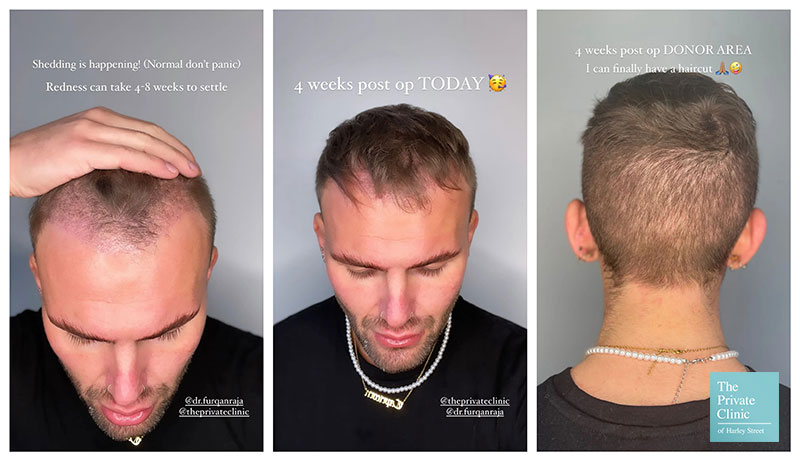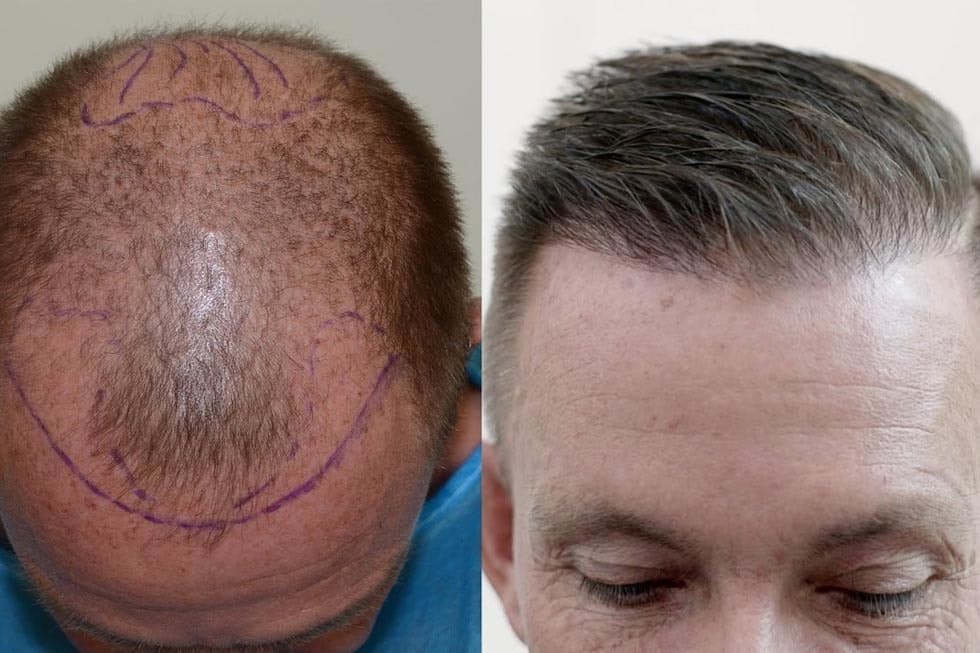Healthy follicles are relocated during the transplant, but the newly-placed hair, which itself is dead, will fall out within two to three weeks. New growth typically begins eight to 12 months after the procedure, and your doctor may prescribe a hair growth medication or topical to help reduce or stop hair loss in the future. While there are now many quick and precise ways to retrieve material, the entire procedure can take up to six hours. So, let’s reserve a whole day for it, even though you can easily return to work the next day. The skin that is transplanted with FUE heals very quickly and does not require additional care and protection from sunlight.
As Mejia put it, “If they do a traditional kind of Middle-Eastern hairline on you, because that’s what they do for everybody…” he tailed off ominously. That’s why we’re proud to offer our patients Follicular Unit Extraction (FUE) hair transplant, which can help you achieve natural results without obvious signs of treatment. If you have thinning hair or a receding hairline, you may be interested in learning more about how hair transplant works.
Following hair restoration surgery, many of our patients take hair loss medication such as finasteride and/or minoxidil to help stabilize ongoing hair loss and minimize the need for further surgery. Hair loss is progressive and there’s a physical limit to what can be done in a single procedure.
Back in 1939 and 1942, Okuda and Tamura in Japan found out that hairs transplanted from the back of the head to recreate pubic hair loss would survive and grow. This was the brilliant breakthrough we needed to know that results would continue to survive despite being transplanted into an area that was predisposed toward hair loss.
And not all of them are ideal for people who are looking for natural-looking results (hair plugs, we’re looking at you). Unlike other providers, we promise we will simply be there for all your questions and will not badger you to make a decision or dangle one-day special offers in front of you. Other side-effects include temporary swelling of the forehead and temples, typically for less than a week, and decreased sensitivity on top of the head for a few weeks or months after the procedure. Hair transplantation surgeries are relatively safe and rarely cause complications. DHI and FUE are less invasive than FUT because they don’t require a surgeon to cut a large strip of skin. To help with this, the Norwood Scale has been designed to analyse the extent of hair loss in patients. The basic principle behind FUE hair transplant is the same as its’ predecessors- uproot the hair from one area of the body and re-plant it in another area.
What is the best way to work out the number of grafts required for an FUE transplant?
They will want to identify the cause of your hair loss, whether or not there is a pattern, whether there is enough donor, and if that hair is healthy enough to withstand a transplant. Typically, during an FUE transplant like NeoGraft, only 2,000 grafts are transplanted at a time. This would mean you’d need at least two hair transplant sessions for 3,000 grafts.
Physical Recovery Time After a Hair Transplant
We will carefully cut this strip into small grafts that contain varying amounts of hair. Read more about haartransplantation türkei kosten here. Some grafts will have one or two hairs and others will have four or five hairs. According to the International Society of Hair Restoration Surgery, well over 600,000 people have hair transplants performed yearly. This shouldn’t come as a huge surprise when you consider that about 40% of men experience hair loss to some degree by the time they turn 35. While it may be tempting to run your fingers through your new hairline, you’ll want to carefully avoid touching the grafts in the days following your procedure. Doing so can dislodge the newly implanted grafts, ultimately altering the results of the procedure. After five days, you can gently touch your transplanted hair as needed.
For your procedure you’ll need to have the back and sides buzzed to allow for the donor hair to be extracted. Most hair clinics will also have you buzz the top to make transplantation easier, but we do not require it. We understand how important it is for many patients to be as inconspicuous as possible.
Also called hair restoration or hair replacement, it’s usually for people who have already tried other hair loss treatments. Dermatologists (healthcare providers specializing in the skin) or plastic surgeons (healthcare providers specializing in reconstructive procedures) perform hair transplants. Hair transplant procedures encompass advanced surgical techniques, involving the transfer of hair follicles from a donor area to the recipient area experiencing hair loss or thinning. These hair follicles, termed grafts, form the cornerstone of successful hair transplantation, relying on the surgeon’s skill and strategic graft placement for optimal results.
“I’ve been going to El Paso Cosmetic for years for my skincare and asthetic needs and I’ve never been disappointed! The clinic is lovely, the staff is extremely professional, there is never a long wait and I always leave with a boost of confidence! Learn the secrets to maximizing the longevity of your BOTOX results, including skin care and healthy lifestyle choices that make a difference. There are several reasons why transplanting more than 5000 grafts in a single session is not recommended.



